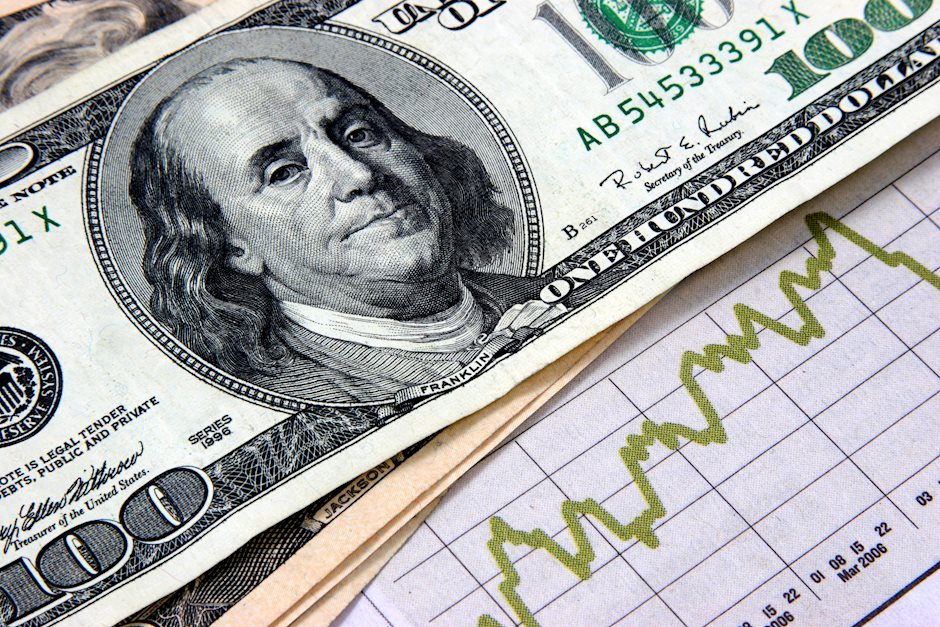US Dollar sees red as investors await labor market data throughout the week
- DXY Index is currently trading at a loss around 103.80.
- Key drivers of DXY Index movements will be US labor market data to be released this week.
- Expectations of the start of the easing cycle in June may limit losses.

The US Dollar Index (DXY) is presently fluctuating in the vicinity of 103.80, exhibiting minor losses on Monday. The market remains focused on potential variations in line with the flow of incoming data, including the key Nonfarm Payrolls (NFP) figures from February set for release later in the week.
The US labor market continues to influence the Federal Reserve’s (Fed) easing cycle, which is predicted to commence in June. This suggests that the Fed may adopt a more dovish stance in case a slowdown in employment is seen. The dovish outlook, inherently indicative of lower interest rates and near-term cuts, could potentially lead to a weaker US Dollar.
Daily digest market movers: DXY stands weak at the start of the week, eyes on labor market data
- Predictions for the Nonfarm Payrolls report (NFP) see an addition of 200K jobs in February, which will mean a deceleration from January’s reading. Wage inflation measured by the Average Hourly Earnings and the Unemployment Rate will also be studied.
- Other key employment figures set to be released this week include JOLTs Job Openings and ADP Employment Change from February and weekly Jobless Claims.
- Market predicts no likelihood of a rate reduction at the impending March 20 meeting, with the probability escalating to 25% on May 1 and reaching 90% for the June meeting.
- US Treasury bond yields are up and trading at 4.59% for the 2-year, 4.20% for the 5-year, and 4.22% for the 10-year bonds, which may limit the downside for the session.
DXY technical analysis: DXY faces bearish pressure in near term, bulls control broader view
The technical outlook for DXY indicates a somewhat convoluted scenario. The Relative Strength Index (RSI) showcases a negative posture with a descending trajectory, urging a comprehensive bearish momentum for the index in the short term. Similarly, the visible rise in red bars in the Moving Average Convergence Divergence (MACD) corroborates the increasing selling momentum, providing further weight to the bearish perspective.
In contradiction, the Simple Moving Averages (SMAs) paint a different picture entirely on the broader scale. Despite the bears asserting their presence by pushing the DXY below the 20 and 100-day SMAs, it remains notably above the 200-day SMA. This firm positioning suggests that the bulls are anything but phased, maintaining control over the larger time horizon. Consequently, while the immediate outlook may have the scales tipped in the bear's favor, the ongoing bullish undercurrent cannot be ignored.
Fed FAQs
What does the Federal Reserve do, how does it impact the US Dollar?
Monetary policy in the US is shaped by the Federal Reserve (Fed). The Fed has two mandates: to achieve price stability and foster full employment. Its primary tool to achieve these goals is by adjusting interest rates.
When prices are rising too quickly and inflation is above the Fed’s 2% target, it raises interest rates, increasing borrowing costs throughout the economy. This results in a stronger US Dollar (USD) as it makes the US a more attractive place for international investors to park their money.
When inflation falls below 2% or the Unemployment Rate is too high, the Fed may lower interest rates to encourage borrowing, which weighs on the Greenback.
How often does the Fed hold monetary policy meetings?
The Federal Reserve (Fed) holds eight policy meetings a year, where the Federal Open Market Committee (FOMC) assesses economic conditions and makes monetary policy decisions.
The FOMC is attended by twelve Fed officials – the seven members of the Board of Governors, the president of the Federal Reserve Bank of New York, and four of the remaining eleven regional Reserve Bank presidents, who serve one-year terms on a rotating basis.
What is Quantitative Easing (QE) and how does it impact USD?
In extreme situations, the Federal Reserve may resort to a policy named Quantitative Easing (QE). QE is the process by which the Fed substantially increases the flow of credit in a stuck financial system.
It is a non-standard policy measure used during crises or when inflation is extremely low. It was the Fed’s weapon of choice during the Great Financial Crisis in 2008. It involves the Fed printing more Dollars and using them to buy high grade bonds from financial institutions. QE usually weakens the US Dollar.
What is Quantitative Tightening (QT) and how does it impact the US Dollar?
Quantitative tightening (QT) is the reverse process of QE, whereby the Federal Reserve stops buying bonds from financial institutions and does not reinvest the principal from the bonds it holds maturing, to purchase new bonds. It is usually positive for the value of the US Dollar.
Author

Patricio Martín
FXStreet
Patricio is an economist from Argentina passionate about global finance and understanding the daily movements of the markets.

















